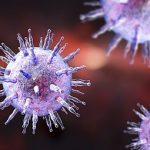Scientists have long sought to find all the areas where the virus might conceal its genetic code in order to develop therapies that may one day completely cleanse the body of HIV infection.
A recent study from a group of scientists shows that circulating white blood cells called monocytes can be used to detect one such persistent reservoir of HIV genes. Blood samples from HIV-positive men and women who were using long-term suppressive treatment were utilised in the study. Monocytes are temporary immune cells that circulate in the circulation and are precursors of macrophages, immune cells with the ability to absorb and eliminate viruses, bacteria, and other foreign cells from the host.
According to the results of the current study, monocytes from HIV-positive patients receiving long-term, conventional antiretroviral treatment had persistent HIV DNA that might infect nearby cells.
The discoveries, according to the experts, may offer a new route for attempts to enhance medicines and ultimately cure HIV, which, according to the World Health Organization, affects more than 34 million people worldwide.
Current antiretroviral drugs have been able to routinely lower HIV to undetectable levels, but they have not been able to entirely eliminate the virus. A kind of immune cell known as a CD4+ T-cell is where HIV stores its genome most frequently, according to scientists. Reservoirs are the name for these covert locations. To completely eradicate HIV, it is necessary to identify and destroy cells that are carrying the virus’ genome using biomarkers.
Journal article: Veenhuis, R.T., 2023. Monocyte-derived macrophages contain persistent latent HIV reservoirs. Nature Microbiology.
Summary by Stefan Botha
